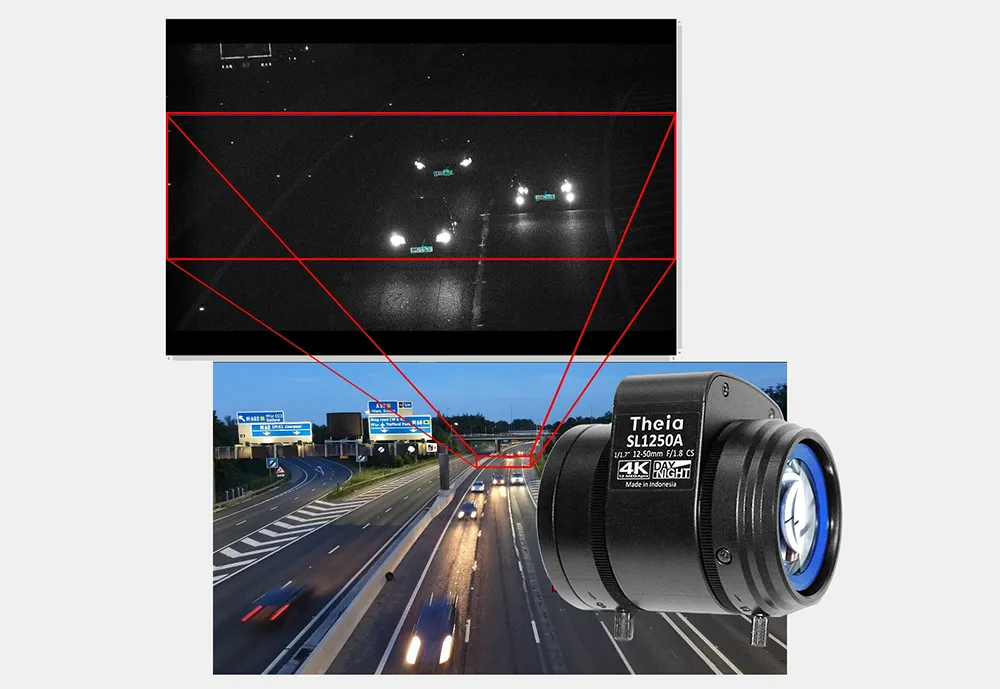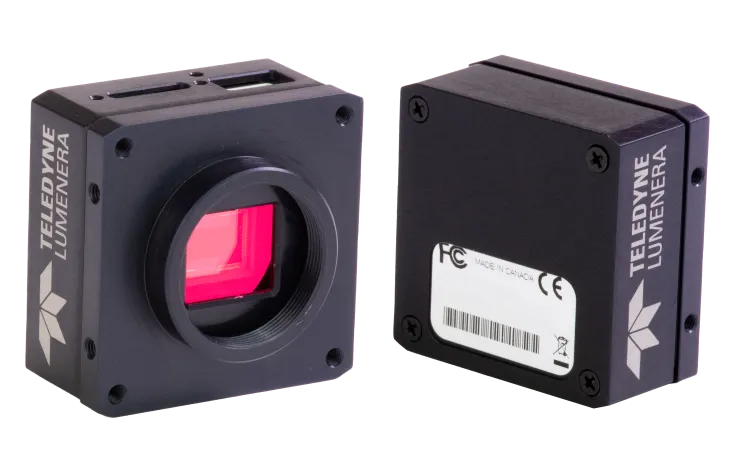
Theia’s compact telephoto lenses have the resolution and features expected from high performance lenses and have been adopted in ITS and ANPR systems on five continents. Theia’s SL1250 and TL1250 lenses offer 300lp/mm resolution, suitable for 4K sensors with pixels as small as 1.55 microns; for up to 1/1.7” imagers. Theia’s SL940 and TL936 lenses offer 200lp/mm suitable for 5 megapixel sensors with pixels as small as 2.3 microns; for 1/2.3” imagers or smaller.
The telephotos are IR-corrected from 435 – 940nm to maintain their crisp image in the near IR spectrum. The IR correction keeps the image sharp in daylight, and in IR illumination by focusing visible and NIR light to the same plane without focus shift.
All Theia’s lenses are able to identify plates at a variety of speeds and distances, and when paired with today’s high resolution cameras and the latest AI engines Theia’s SL1250 and TL1250 telephotos are able to capture plates at 140 meters or 450 feet away or more, in both visible and NIR illumination.
The lenses are offered in manual, DC Auto, or P-iris versions, and CS or D25 board mount options. Theia’s SL1250 and TL1250 lenses provide 12-50mm focal length, yet are only 52mm long, while the SL940 and TL936 offers 9-40mm and 9-36mm focal lengths but are only 50mm long - much more compact than the average telephoto.
The motorised versions (TL936, TL1250) with motorised zoom and focus are immensely versatile providing the ability to adjust the zoom and focus remotely, offering enormous flexibility in the placement of the ANPR system, including in mobile systems, and avoiding costly field calibrations and traffic disruptions.
Motorised lenses
The motorised versions come in combinations with motorised zoom and focus with photo-interrupter motor stops and optional integrated IR cut or bandpass filters for use when the application requires sensitivity to different wavelengths. Models in 850 and 940nm pass filters are currently available; other wavelengths are also possible.
Theia also offers their new MCR IQ™ Motor Control Board series and MCR IQ™ software, which allows user to remotely control zoom, focus, P-iris and optional IR filters. The software with GUI and python module allows the user to send and receive commands from the board for rapid evaluation and integration of the lenses. The motor control board connects via USB, UART, or I2C connection, and the user may change this protocol to fit their needs.
Theia’s motorised lenses are intended for remote zoom and focus and occasional zooming and refocusing, rather than continuous zooming and refocusing as in PTZ applications. Refer to the specifications for details on missed step and backlash tolerances as well as motor speed and temperature limits. Theia also provides a motor temperature calculator to help you estimate the temperature generated using the lens under your use conditions.
The testimonial video below highlights four customers on three continents who share their experience with Theia’s telephoto lenses. Learn why Theia’s telephotos are the choice for so many intelligent traffic systems, licence plate recognition, and automated number plate recognition systems.
Content produced in association with Theia Technologies










